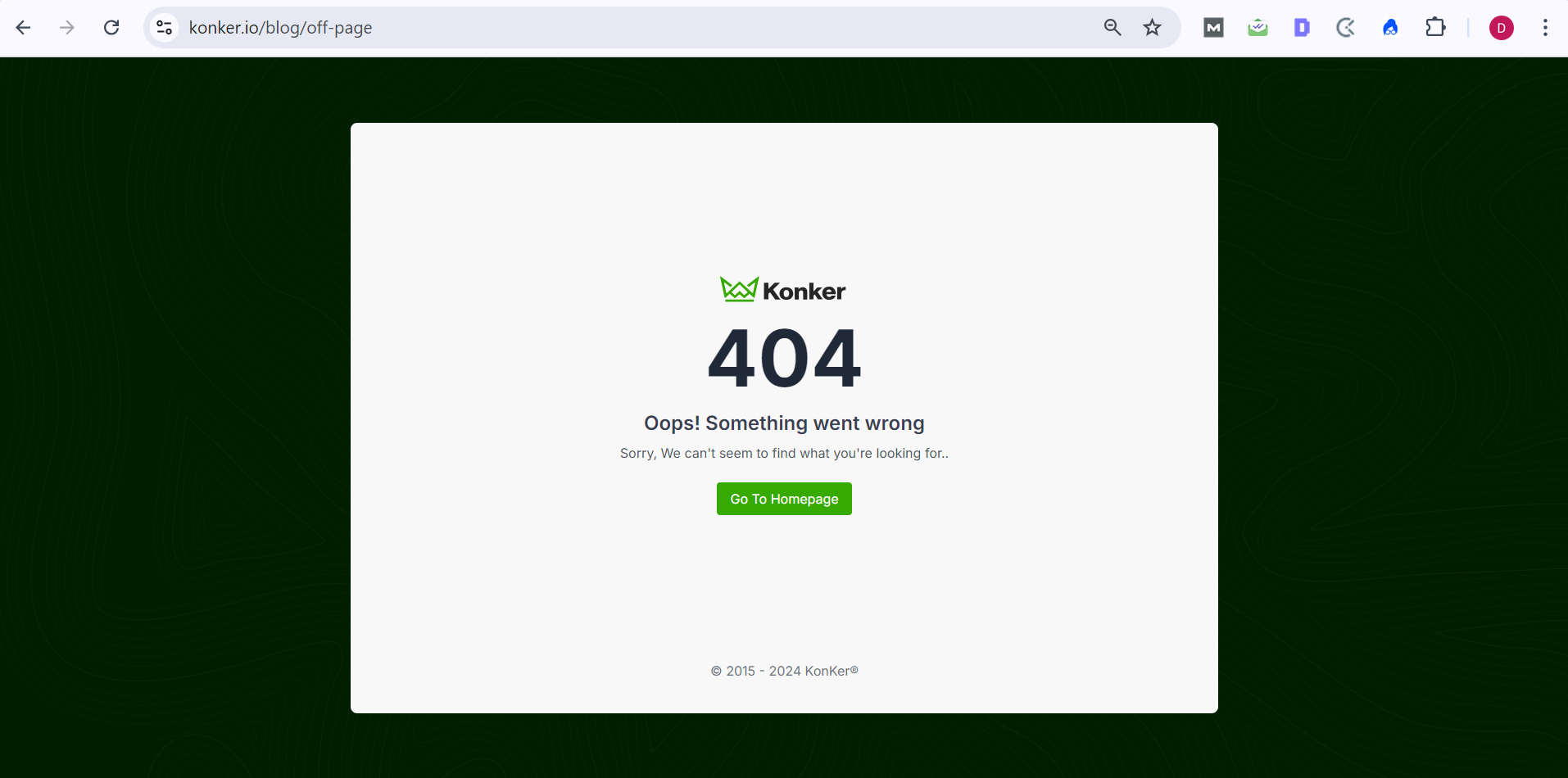Broken link building is a go-to strategy for many in the link building game. It’s actually the fifth most popular approach, as noted in Aira’s annual link building report, which gathers insights from over 250 digital marketing pros.
Broken link building offers a straightforward way to strengthen your website’s authority by addressing broken links on other sites.
However, it’s not a foolproof method, and doing it right takes some finesse.
This guide explains how to do broken link building with clear, actionable steps. Instead of leaving these broken links untouched, you can provide relevant content that serves as a replacement. The process involves identifying broken links within your niche and suggesting your content as a solution.
Understanding broken link building techniques requires a systematic approach. First, focus on how to find broken links for link building using available tools designed to spot these opportunities. After gathering your list, reach out to website owners with personalized suggestions. By doing so, you help them fix broken links while enhancing your own SEO efforts.
This method is beneficial for both sides, as it supports the upkeep of valuable content across the web. The following sections will cover essential steps and best practices to help you succeed in broken link building without the need for complex strategies or jargon.
But before we move into uderstading the broken link building techniques in, let’s start with the basics.
- What is Broken Link Building?
- Are Broken Link Building Tactics Effective?
- How To Do Broken Link Building: Techniques and Tested Methods
- What to Do After Finding Borken Links?

What is Broken Link Building?
Broken link building is all about tracking down pages in your niche that have dead links.
After finding these broken links, you contact the site owners and suggest they link to your content instead.
It’s beneficial for both sides—the site owner fixes a dead link, improving their site’s quality, and you might get a new backlink.
This approach is considered white hat because it focuses on creating solid content and politely asking for a link. The site owner only links to your page if they think it’s worth it.
There are several reasons why links break. Here are a few common ones:
- The website took down the linked page.
- The link was incorrectly set up from the start.
- The linked page’s URL was changed.
- The website was updated or taken down completely.
Are Broken Link Building Tactics Effective?
Opinions vary on this.
Some swear by link building, while others see it as a hassle with mixed results.
If you approach it with the right mindset and tactics (which we’ll cover soon), broken link building can deliver solid outcomes. It offers quick wins when webmasters swap out broken links for yours and helps you grow your network.
Connecting with experts and creators in your field can open doors for future collaborations. And if a few high-authority sites choose to link to your content, your SEO could get a significant boost.
How To Do Broken Link Building: Techniques and Tested Methods
To do broken link building, you not to first understand how to find broken links for link building. It’s not something you just stumble upon, no matter how active you are in your industry. But there are some tried and testes broken link building methods and tools to help you out.
You can think of broken link building methods as a friendly nudge to help the internet stay tidy while giving your own site a boost. Here’s how you can do it:
1. Using Google Advanced Search Operators
One of the best ways to start is with search operators. These are like advanced filters for Google’s search engine. By combining different filters, you can zero in on pages that fit your broken link building strategy. Search operators are especially useful for finding pages loaded with external links, which boosts your chances of spotting broken ones.
How to do it:
Here are a few examples to get you started:
- “Your target keyword” + inurl:resources
- “Your target keyword” + intitle:links
- “Your target keyword” + inurl: useful resources
- “Your target keyword” + “favorite websites”
- “Your target keyword” + “helpful resources”
2. The Classic Broken Link Replacement
This strategy is straightforward and focuses on replacing broken links with your content. It’s a win-win—you help the website owner fix a dead link, and you earn a valuable backlink. The key is to find relevant broken links and offer content that naturally fits as a replacement.
How to do it:
- Find Broken Links: Use tools like Ahrefs or Check My Links to locate dead links on relevant websites.
- Analyze the Broken Link: Examine the content the broken link was supposed to lead to and see if you have or can create something similar.
- Create or Update Content: Either use existing content or craft a new piece that fills the gap left by the broken link.
- Outreach: Contact the site owner, inform them of the broken link, and suggest your content as a replacement.
- Follow Up: If needed, send a follow-up email after a few days to increase your chances of getting a response.
3. Resource Page Broken Link Building
Resource pages often contain numerous outbound links, making them prime targets for broken link building. By finding dead links on these pages and suggesting your content as a replacement, you can secure backlinks from authoritative sites that curate valuable resources.
How to do it:
- Find Resource Pages: Search for resource pages in your niche using queries like “Your target keyword” + inurl: useful resources

- Check for Broken Links: Run these pages through a tool like Check My Links to identify dead links.
- Create Relevant Content: Develop content that aligns with the original resource linked.
- Outreach: Contact the page owner, inform them of the broken link, and propose your content as a substitute.
- Build a Relationship: Maintain a good rapport with the site owner for potential future link building opportunities.
4. Competitor-Based Broken Link Building
By analyzing your competitor’s backlinks, you can identify broken links that once pointed to their content. This strategy allows you to capitalize on their losses by replacing those links with your content, especially if it’s more up-to-date or relevant.
How to do it:
- Analyze Competitor Backlinks: Use tools like Ahrefs to identify broken links pointing to your competitors.
- Evaluate the Broken Content: Review what the broken link was pointing to and determine if you have or can create better content.
- Outreach: Inform the site owner about the dead link and suggest your content as a superior alternative.
- Offer Extra Value: Highlight additional valuable content you have that could also be linked to, making your pitch even more attractive.
5. Using Content Aggregators for Broken Links
Content aggregators are websites that collect and showcase the best resources in a specific niche. If you find a broken link on one of these sites, you can offer your content as a replacement, gaining visibility from a curated audience.
How to do it:
- Identify Aggregators in Your Niche: Find content aggregators that compile resources or articles related to your field.
- Check for Broken Links: Use a broken link checker to identify dead links on these aggregator pages.
- Create or Offer Content: Ensure your content fits what the broken link originally provided.
- Outreach: Contact the aggregator’s curator, suggest your content as a replacement, and explain its value to their audience.
- Build Trust: Offer to help with other broken links on their site, fostering a long-term relationship.
6. Wikipedia Broken Link Building
Wikipedia is a high-authority site that occasionally has broken or outdated links. By finding these and replacing them with your content, you can earn a highly valuable backlink. However, Wikipedia’s strict guidelines mean your content must be reliable and well-sourced.
How to do it:
- Search for Dead Links on Wikipedia: Use tools like WikiGrabber to find broken links or citation-needed tags on Wikipedia.
- Create or Adapt Content: Develop content that meets Wikipedia’s standards and matches the original reference.
- Edit Wikipedia: Replace the broken link with your content, adding it as a reliable source.
- Monitor the Edit: Keep an eye on your edit to ensure it remains active and isn’t reverted.
- Expand Your Reach: Look for more broken links across Wikipedia, using this strategy to position your content as authoritative.
Each of these strategies not only helps you build quality backlinks but also improves the overall web experience by helping site owners maintain their content
Don’t let broken links hold your site back. Hire dedicated link building experts who know how to transform dead links into powerful backlinks from top-tier sites. Boost your site’s authority and traffic with professional support.
What to Do After Finding Broken Links?
The answer is to recreate the content for your blog
After spotting a broken link on a page that’s a perfect match for your niche, the next move is to recreate the content.
Since the broken link leads to a 404 error, you’ll need to figure out what the original page looked like. The Wayback Machine can help with that. It’s a handy tool that lets you see what the page used to look like, how it evolved, and what it originally covered.
This ensures that your recreated content hits the same points and serves a similar purpose.
When it comes to recreating a page, you’ve got two options:
1. Copy the Dead Page (Not Recommended)
This is the easy route but can come off as plagiarism. It’s basically copying the old content and adding a note at the end about where it originally appeared before it got taken down or maybe doing minor changes. But this is something we will never suggest. Google prioritizes high quality and original content. So, you should better stick to the guidelines.
2. Build a Better Version
A smarter approach is to use the old page as inspiration and then create something fresh with new copy and visuals. You can enhance the content by:
- Updating outdated stats or references.
- Simplifying complex ideas to make them more digestible.
- Adding graphics or visuals to highlight key points.
Bonus: How to Find Broken Links for Link Building Using Ahrefs
Finding broken links with Ahrefs is a straightforward approach to boosting your SEO efforts. Let’s break down the steps:
Step 1: Login Ahrefs
First, log in to your Ahrefs account. If you don’t have one, it’s worth the investment for this and a bunch of other SEO goodies.
Step 2: Enter a Competitor’s Website
Go to the Site Explorer and add in a competitor’s domain. The goal is to find broken links pointing to them, which you can snag for yourself.
Step 3: Navigate to the “Broken Links” Report
Head over to the “Backlinks” section, and you’ll see an option for “Broken.” Click on it. Now you’re looking at all the broken backlinks pointing to that site.
Step 4: Go Through the List
Browse through the broken links and look for ones that are relevant to your content. The more closely related, the better.
Step 5: Check the Original Content
Before you get too excited, check what the broken link was supposed to point to. Make sure you have something similar or better to offer.
Step 6: Take Note
Jot down the URLs of the broken links and the pages they’re on. This will come in handy when you start your outreach.
Conclusion
Broken link building techniques are all about finding good reasons to reach out to potential link partners. With broken link building, the reason is simple: they’ve got a dead link on their site that you can help fix. The skyscraper technique is about offering them something better than what they already have. And other methods come with their own reasons for making contact.
But none of these approaches will work unless you have a solid offer. That’s why it’s smart to use customized outreach templates tailored to different groups linking to those dead pages.
Make your outreach countl by hiring skilled link building experts. They’ll help you secure valuable backlinks from top DA sites, turning those dead links into opportunities. Get the professional help you need to boost your rankings and drive quality traffic.








I’d constantly want to be update on new content on this web site, saved to bookmarks! .
It’s an awesome article forr all the online viewers; they will
take advantage from it I am sure.
I couldn’t resist commenting. Very well written!